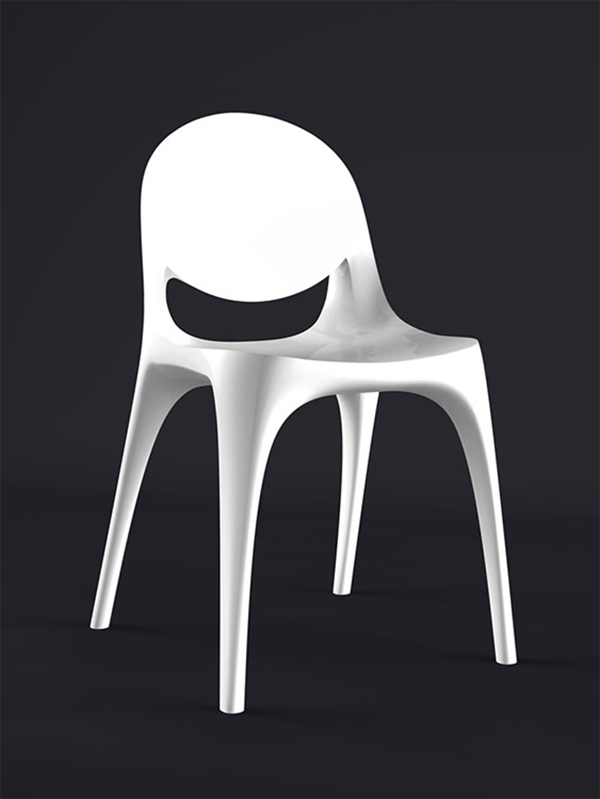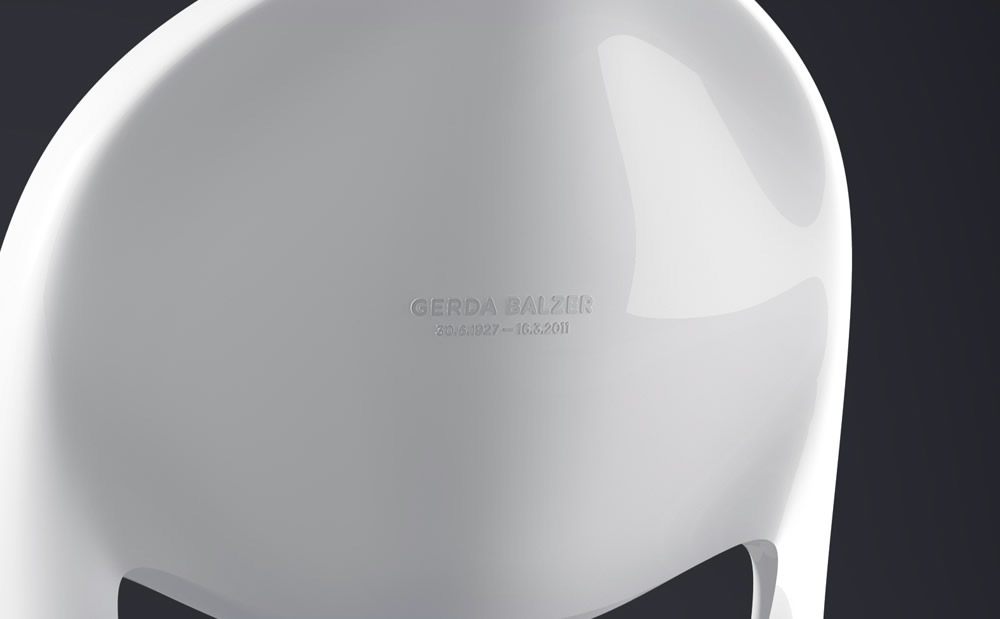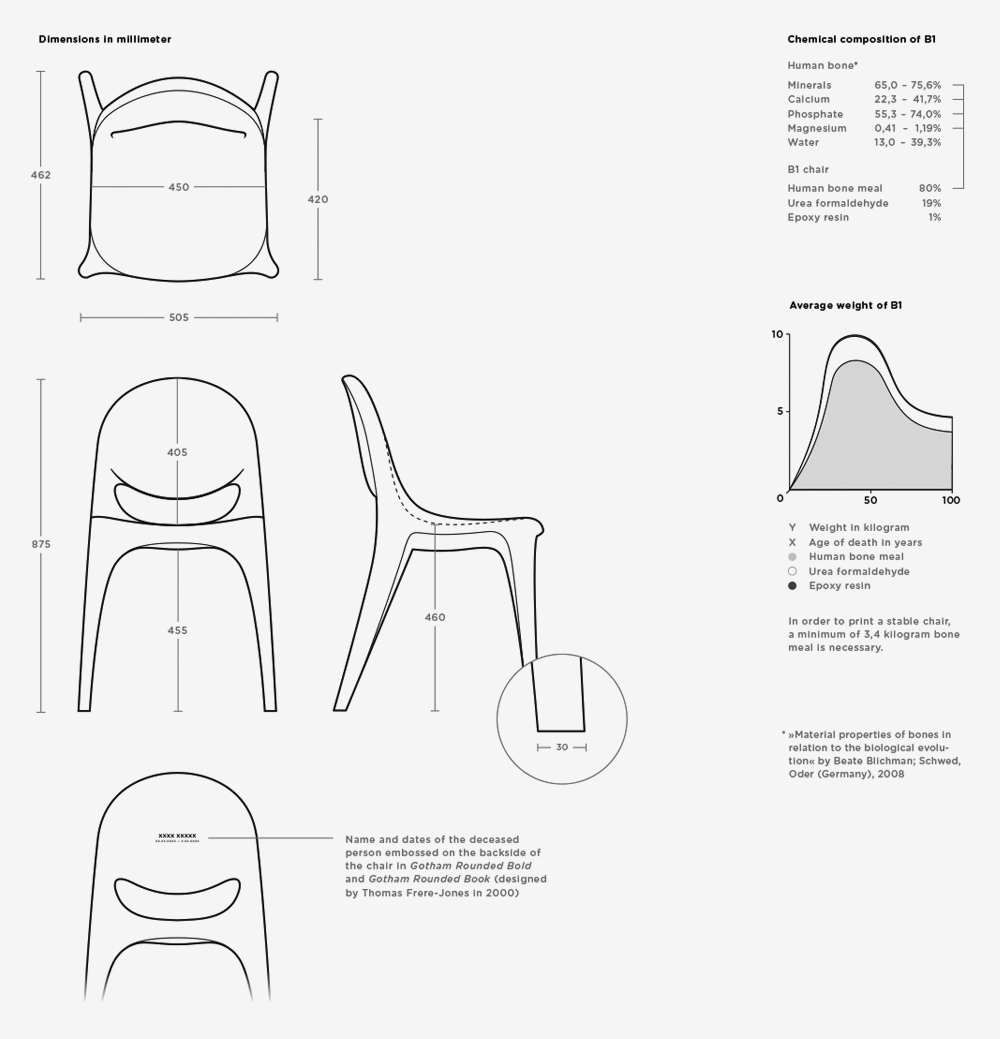After researching the various ways different cultures deal with human remains, we found an abundance of multi-shaped vessels designed to contain the remains of our loved ones. These containers, by their very nature, constrain our access to the deceased, acting as symbols of grief rather than integrating into our everyday realities. Emerging technologies, however, allow us to rethink the way we deal with human remains. A recent project at the University of Seattle, WA explores the potential for using 3D printing technology to create any shape imaginable from pulverized bone material.
The B1 Chair proposes to repurpose the bone matter of a deceased person, typically between 5 and 10 kilograms after dehydration, to create an entity that acts both as an object of remembrance and utility. As the amount of bone material will vary, an elaborate software algorithm will determine the material distribution on a case-by-case basis. This results in every chair having a unique inner skeleton and overall weight, while maintaining the same outer shell. A discreet dedication on the backrest credits the material supplier for generations to come.





Inner structures based on different bone densities



